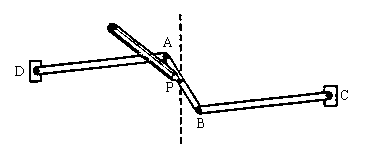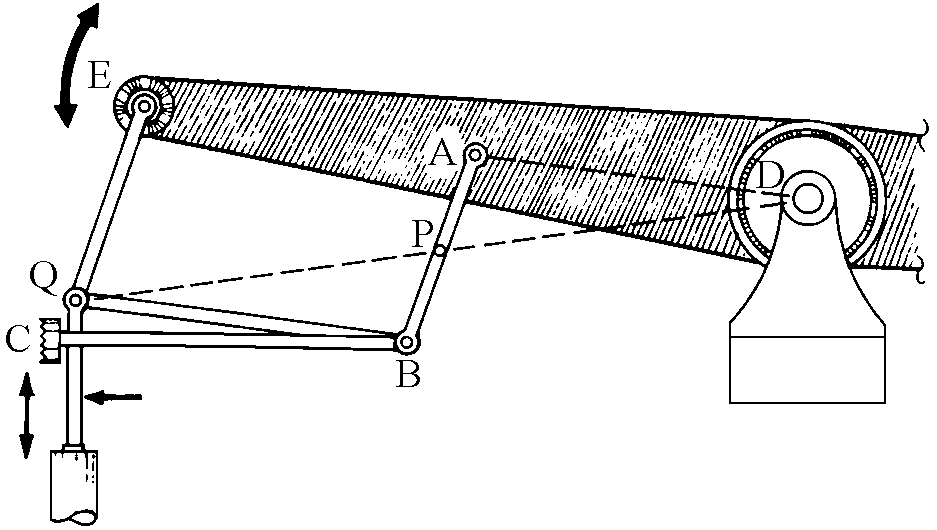
In 1784, James Watt, the inventor of the steam machine,
reached a practical solution to the problem. He used
three connecting rods, of which two, AD and BC, are of equal
length, with AB much shorter.
If C and D are points fixed at proper different heights,
then moving the AB rod to its median point P appears to draw,
for an appreciable length, a vertical rectilinear line.
"Appears" is the right word, because, by making
a simple model of this mechanism with cardboard strips or
any other material (ice cream sticks connected with pins
are just fine), one realises immediately that it is an
approximation. The complete movement of the articulated
system causes the P point to draw a figure 8 (a
"long inflection" curve). Notwithstanding these
limitations, the Watt mechanism, thanks to its
simplicity, has been widely used, and still is, to solve
the problem of frictionless rectilinear motion.

To drive the piston rod in steam machines, rather
than using the simple version described above,
a variant of it was used, based on the same principle and
known as "Watt's parallelogram".
DA = AE = BQ = BC and AB = EQ, the C and D points are
fixed and therefore the DABC system is identical to the
one described above: the median point P of the AB rod
draws an approximate vertical rectilinear motion. Since
ABQE is a parallelogram, the motion of the Q point is a
2-factor enlargement of the motion of P, thus Q, which
obtains its impetus from the piston rod, also moves with
a "nearly" rectilinear vertical motion.
The invention of this mechanism was certainly a step
forward in the development of mechanical technology at
the beginning of the 19th century, linked to the
improvement and to the study of the application
possibilities of the steam machine. It is thought that
Watt was much prouder of this discovery than of the
actual invention of the steam engine!